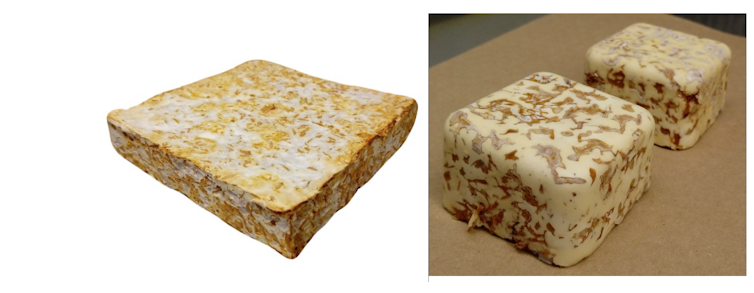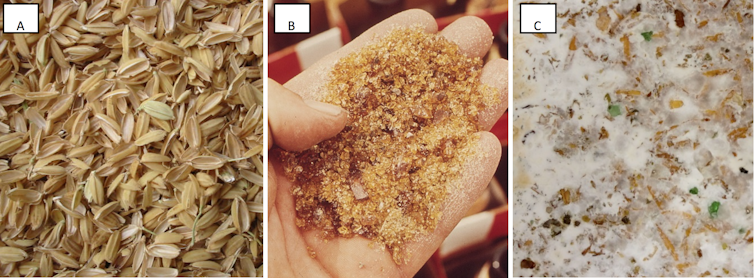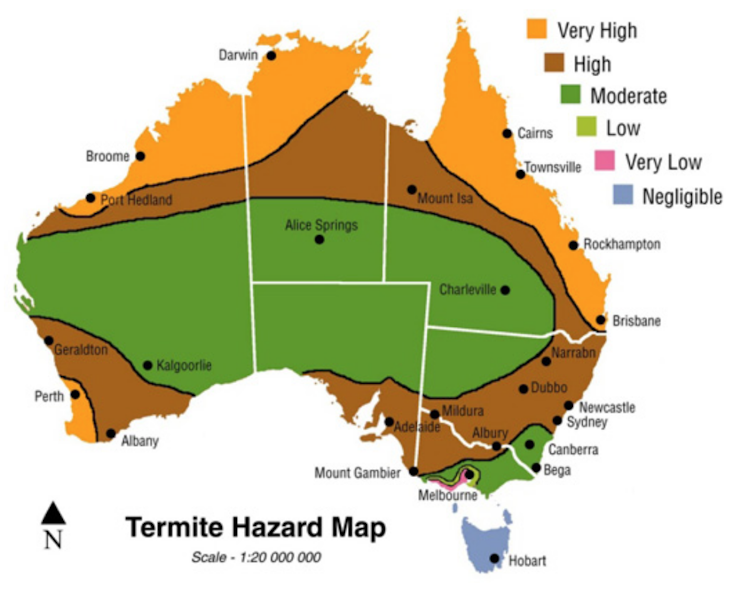Scientists create new building material out of fungus, rice and glass
GUEST OBSERVATION
Would you live in a house made of fungus? It’s not just a rhetorical question: fungi are the key to a new low-carbon, fire-resistant and termite-deterring building material.
This type of material, known as a mycelium composite, uses the Trametes versicolor fungus to combine agricultural and industrial waste to create lightweight but strong bricks. It’s cheaper than synthetic plastics or engineered wood, and reduces the amount of waste that goes to landfill.
What a fun guy

Fungal brick prototypes made from rice hulls and glass fines waste. Tien Huynh, Author provided
Working with our colleagues, we used fungus to bind rice hulls (the thin covering that protects rice grains) and glass fines (discarded, small or contaminated glass). We then baked the mixture to produce a new, natural building material.
Making these fungal bricks is a low-energy and zero-carbon process. Their structure means they can be moulded into many shapes. They are therefore suited to a variety of uses, particularly in the packaging and construction industries.
A staple crop for more than half the world’s population, rice has an annual global consumption of more than 480 million metric tonnes and 20% of this is comprised of rice hulls. In Australia alone, we generate about 600,000 tonnes of glass waste a year. Usually these rice hulls and glass fines are incinerated or sent to landfill. So our new material offers a cost-effective way to reduce waste.
Fire fighter
Fungal bricks make ideal fire-resistant insulation or panelling. The material is more thermally stable than synthetic construction materials such as polystyrene and particleboard, which are derived from petroleum or natural gas.

Rice hulls, glass fines and the mixture of rice, glass and fungus, before baking. Wikipedia/Tien Huynh, Author provided
This means that fungal bricks burn more slowly and with less heat, and release less smoke and carbon dioxide than their synthetic counterparts. Their widespread use in construction would therefore improve fire safety.
Thousands of fires occur every year and the main causes of fatalities are smoke inhalation and carbon monoxide poisoning. By reducing smoke release, fungal bricks could allow more time for escape or rescue in the event of a fire, thus potentially saving lives.
Bug battler
Termites are a big issue: more than half of Australia is highly susceptible to termite infestations. These cost homeowners more than A$1.5 billion a year.
Our construction material could provide a solution for combating infestations, as the silica content of rice and glass would make buildings less appetising to termites.
The use of these fire-and-termite-resistant materials could simultaneously revolutionise the building industry and improve waste recycling.

Figure 3. Termite infestation zones in Australia. termitesonline.com.au, Author provided
This is an exciting time to get creative about our waste. With China no longer buying Australia’s recycling – and new rules reducing plastic use in Australian supermarkets – we have the chance to move in line with communities in Japan, Sweden and Scotland that have near-zero waste.
Fungal bricks could be just one example of the creative thinking that will help us get there.
Tien Huynh, Senior Lecturer in the School of Sciences, RMIT University
Mitchell Jones, PhD Student, RMIT University
This article was originally published on The Conversation. Read the original article.
